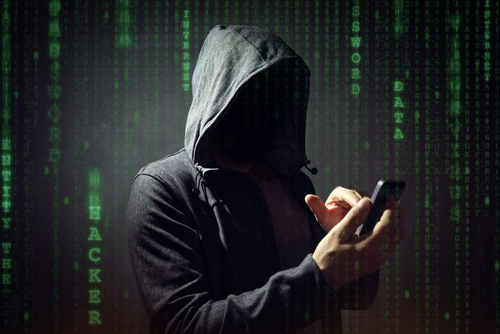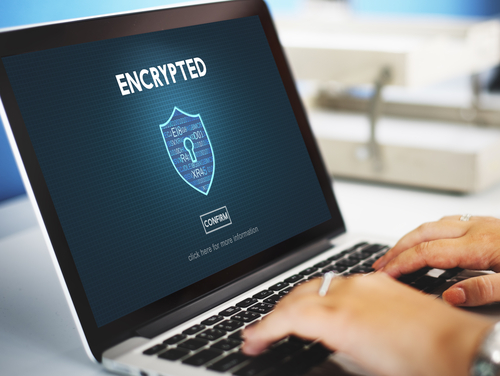Email encryption is a great way to beef up your email security and keep your private messages confidential. If you want to encrypt your emails, you may wonder if you can avoid paying for an email encryption service and send an encrypted email yourself.
In this guide, we will explain step-by-step how to encrypt your email using the most prominent email clients on the market.

Why is Email Encryption Important?
Email encryption is a way to protect yourself or your company from identity theft, data breaches, and other cyber attacks. It obscures sensitive information to prevent prying eyes from accessing your private messages.
Since its first appearance in the 1970s, email has become an essential form of communication for personal and business uses. However, alongside this revolutionary messaging tool came the scammers and cyber thieves who decided to use it for their dirty work.
There are over 4.37 million email users worldwide. When you communicate with a large number of these people each day, it can be hard to tell who is trustworthy and who is not. On public wifi or within a company network, it can be easy for people to intercept emails.
Spam links, phishing, and other fraudulent email scams can be devastating to a company. Cyberthieves can not only steal your money but tarnish your reputation for security. When you use email encryption, you are scrambling your email message in transit to make it difficult for hackers to read the decode your content, including files and attachments.
When you encrypt an email, you can encrypt the whole message, just the attachments, or even add a digital signature to your emails. Each provides a different level of security. Many business sectors use this type of security to ensure the safety of their employees and clients.
If your business deals with private information of any sort through email, email encryption is a great way to add security to those exchanges. The following sectors use email encryption frequently:
- Financial
- Health
- Legal
- Government
If you are a business owner or even an individual using your email to send confidential information, you want to ensure your message only reaches the person intended.
Types of Email Encryption
Before you begin encrypting your emails, there are two popular encryption options you need to learn about. These two protocols have similar ways of protecting your messages but with different methods. Each one is compatible with certain email hosts, so it is important to research what types of protocols and apps your email client works with before beginning.
S/MIME
Internet Mail Extension (S/MIME) is a protocol built into many devices these days. OS X devices usually have S/MIME already defaulted. Many large companies like Outlook and Gmail use S/MIME encryption as part of their service.
The way S/MIME works is the sender encrypts the message with a certificate that verifies its safety. Then, the recipient uses the provided certificate to unlock the content and receive the information safely on their device.
With S/MIME, you can sign your emails using a digital signature. When the recipient opens the email, your public key will verify that the message is from you. This public key helps to let the recipient know that their email is from someone they can trust. It gives you a way to verify your identity.
This type of encryption usually comes with subscriptions and can be costly. However, Apple and Outlook devices work well with this protocol. Web-based email clients like Gmail and Yahoo are harder to set up with S/MIME.
PGP
Pretty Good Privacy (PGP) is an encryption protocol. It uses private and public keys to verify email safety. Recipients need both public and private encryption keys, or digital IDs, to access encrypted mail. Senders need the public key.
When you send an email with PGP, it creates a one-time passcode for that session. The message is protected during transit by the recipient’s public key. Then, the sender submits their session key as they send the email. The recipient uses their private key to decode it.
PGP compresses the message into plaintext to save time and space. This compression reinforces cryptography. While in transit, the protocol scrambles the message using mathematical algorithms that are difficult to decipher.
This email protocol is cheaper and gives you more security options than S/MIME. You can choose how well-encrypted your messages are. But, PGP is not supported by many email clients. It requires third-party apps to run. Apple and Windows products work well with this type of encryption.
![]()
Step-by-Step Tutorial for Encrypting Emails
Several encryption email providers you can choose from can make email encryption simpler. And these services may be the way to go if you have a large business that needs lots of emails encrypted daily. It may be simpler to set up these protocols yourself if you are encrypting emails for personal use,
Here are tutorials on encrypting emails using Microsoft Outlook, Gmail, iOS, and Android.
How to Encrypt Outlook Emails
With Microsoft Outlook, you can encrypt emails in two ways. Microsoft 365 Message Encryption (IRM) is one option, but this protocol requires a paid subscription. The other option is S/MIME. This protocol only works if both the sender and recipient have S/MIME-supported applications. You cannot use both at the same time. This method works with Office 365 and other iterations of Microsoft Windows webmail.
To encrypt your Outlook emails using S/MIME follow these steps:
- Go to “File.” Select “Options.” Then, click “Trust” and “Trust Center Settings.”
- Choose “Email Security” on the left panel.
- Go to “Encrypted Emails” and click “Settings.”
- There should be an option labeled “Certificates and Algorithms,” click “Choose” then “S/MIME certificate.”
- Choose “OK,” then finish writing your email.
- Send the email.
To encrypt using Microsoft 365 Message Encryption:
- Go to your email messages. Select “Options.”
- Then, select “Encrypt.” You can then choose between some different encryption options such as “Encrypt Only” or “Do Not Forward”
- Compose your email.
- Hit send.
How to Encrypt Gmail Emails
With Gmail, it provides S/MIME encryption built into the application. However, both the sender and the recipient need this feature turned on to work. If you want to verify that you have S/MIME turned on, follow the instructions below:
- Sign in using a Google Admin Console. This information is usually separate from your email account. If you work with a group that manages your email in a workplace, someone else may have the Admin Console information.
- Once you have access to the Admin Console, select “Menu.” Then, “Apps.” Next, choose “Google Workplace,” then “Gmail,” then “User settings.”
- Next, choose the organization that you are enabling the S/MIME.
- You should be able to scroll down and see “Enable S/MIME encryption for sending and receiving emails.” It will be under the S/MIME settings. Check that box.
- Click “Save.” It could take up to 24 hours for your settings to update.
- All users under this organization should reload Gmail. Then, a lock encryption icon should appear next to the subject line when you compose an email.
- Begin a new email. Compose your email per usual. Then, select the lock icon to set the level of encryption. If the lock icon is green, the message is secure. A person can only unlock it with a private key. Gray means the sender is protected using Transport Layer Security (TLS) protocols. Red means there is no encryption in place.
How to Encrypt iOS Emails
For Mac:
Typically, iOS/Mac devices have S/MIME encryption protocols set as default. However, if you want to double-check or desire to turn on or off this setting, here is how you can access it.
- Go to “advanced settings.”
- Turn on “S/MIME”.
- Then, change the “Encrypt by Default” to yes.
- Open a new message. Next to the recipient, there will be a lock icon or the encrypt button. If it is red, the recipient should turn their S/MIME setting on.
For iPhones:
- Go to the “settings” icon on your device.
- Scroll down until you see “Mail.”
- There should be several setting options. Choose “Privacy Protection.”
- If the “Protect Mail Activity” icon is enabled you are protected. iOS works by hiding your IP address. They also load remote content privately in the background. This feature makes it harder for senders to follow your mail activity. Essentially, they send your IP address to one destination. Your remote mail content goes to another. This makes it difficult for one entity to know all your information at once.
- If you wish to deselect this feature, you can click the “Protect Mail Activity” icon. Even with this disabled, the Hide IP Address feature will still be on.
How to Encrypt Android Emails
For Android devices, you need to download third-party apps. Android emails cannot encrypt your messages alone. There are a couple of common applications people use to encrypt their emails with Android.CipherMail is one option. With this app, you can send and receive S/MIME mail using the Gmail app.
This app also works with a few other select email clients. OpenKeychain is another option. It uses PGP public keys. It is compatible with K-9 mail and some other email apps. With this app, you create your keys, both public and private.
You need to keep track of these to keep them safe. If a key is compromised, you’ll have to generate another one to ensure the safety of your messages. You can conveniently search for other people’s public keys. This public search allows you to send encrypted emails to clients within the system.
To use OpenKeychain, you need to go to your email app and open the settings. Once you find the button that makes OpenKeychain your default OpenPGP provider, you can send encrypted mail through this app. However, not all email apps are compatible with this app.
Sekur Makes it Easier
If you have a busy schedule, setting up your encryption protocols may be too much for your busy schedule. Or, if you feel the level of tech skills needed to set up these protocols is over your head, Sekur can help you. Our 100% private platform is in Switzerland, so you know you’ll have a secure and privacy-protected service.
SekurMail has an easy migration tool that makes switching to our secure service a breeze. With Sekur, you can send encrypted emails to people inside and outside Sekur’s network. You can also send unlimited-size attachments.
Your mail will be under the protection of Swiss privacy laws. We use military-grade encryption to prioritize your privacy. We also offer VPN and instant messaging so you can ensure all your communication needs are safe and protected from cyber-attacks. We do not data mine.
When you choose Sekur, you are free from big tech hosting. Check out our 7-day trial to add another layer of protection to your email communications.
Conclusion
If you want to send encrypted messages, many email services have settings that allow you to send secure emails built into their programs. However, you may need to turn these on or off, according to your needs. Others require subscriptions to third-party apps to encrypt emails.
Now, we have gone over step-by-step how to enable these security settings for Outlook, Gmail, Android, and Apple. By enabling these features on your devices, you can feel comforted that your messages have another layer of safety.
There are other options out there if you do not want to go through the hassle of enabling encryption. You can pay a subscription to an email client to manage the security for you. This is a great option for businesses with several emails and users to be secured.
Be sure to weigh your options carefully before choosing. Remember that email security is a must in today’s cyber world, and it can make a difference in how smoothly your business and personal communication runs.

